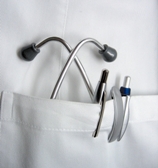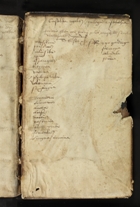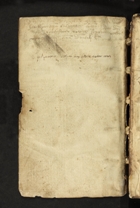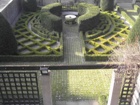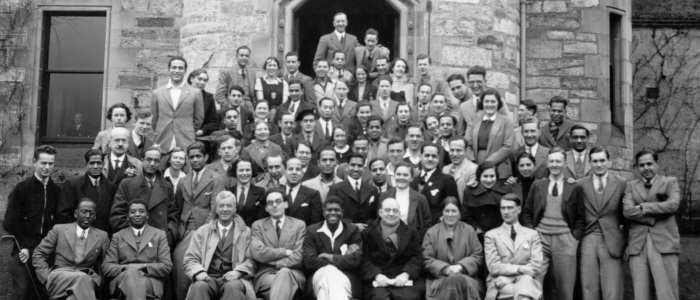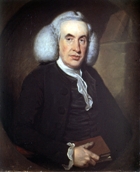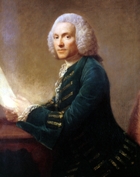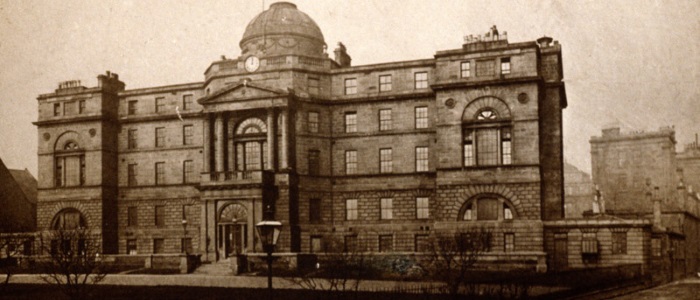18th Century
18th Century
First medical graduate
In the 18th century, the term of apprenticeship for surgeons was five years, though shorter terms were recognised when the apprentice had attended lectures at a medical school.15 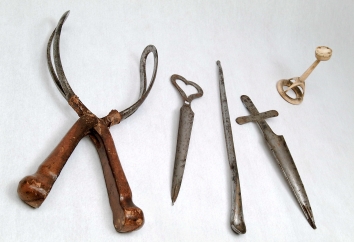
At the beginning of the century, a number of men with experience in medicine began to apply to the University to be examined for the degree of medicine. The first medical graduate of Glasgow was an Englishman, Samuel Benion, a non-conformist clergyman. He matriculated on 9 March 1696 and was given the degree of Doctor of Medicine after an oral examination of a patient's symptoms on 5 October 1703. He was thought to be asked to diagnose the illness, the nature of the illness and its cure.16,17
Professor Extraordinary of Medicine
As there was no Professor of Medicine in the University, Robert Sinclare, the Professor of Mathematics and a 'Doctor of Medicine' was appointed 'Professor Extraordinary of Medicine' to preside at the examination. Two assessors were appointed to examine the candidate's skill. They were Thomas Kennedy and George Thomson, both MD of Leyden and members of the Faculty of Physicians and Surgeons of Glasgow.18
The seeds are sown
The first real beginnings of the medical school could have been said to have been made in 1704, with the setting aside of a portion of the college garden for botanical purposes and the appointment of John Marshall, surgeon of Glasgow, as keeper of the physic garden teacher of botany.19 The study of plants at that time played an essential role in medicine. It included the study of the simple drugs of herbalists and apothecaries. It was essential for budding physicians to be able to recognise plants which had medicinal properties.20 Students continued to study botany until 1959 when it was combined with zoology in a biology course.21
Medicinal plants
The earliest record of plants in the College accounts is for £8/17/0 to 'James Mitchell for Trees for the Physick Garden'. These were mainly fruit trees.22 All common fruit trees that were listed in herbals had health-giving properties. For example, water infusions of lime flowers were regarded as cures for apoplexy, vertigo and epilepsy. Lime's inner bark produced a soft mucilage which was said to soothe and heal burns and scalds. A pipe tree was listed which could have been a Philadelphus (Mock Orange) for decorative purposes or Sambucas nigra, the elder, the flowers, leaves and roots of which could be used for a variety of curative purposes.23
The University almost at once began to examine students for the degree of Doctor of Medicine although not itself teaching them. A chair of medicine was founded in 1713 and a chair of anatomy established in 1720.24
Contemporary physic gardens
The contemporary artist Christine Borland celebrates this legacy in her physic garden 'To Be Set and Sown in the Garden,' constructed outside the University library in 2001 as part of the University's 550th anniversary.25 Another contemporary physic garden and orchard, the St Nicholas Garden, can be found behind Provand's Lordship, close to Glasgow Royal Infirmary, the Cathedral and the site of the Old College.26
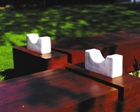
Early Professors
Dr John Johnstoun, a graduate of Utrecht, was appointed Professor of Medicine in 1714. Following Marshall's death, a joint chair of Anatomy and Botany was founded by King George I. The first professor appointed to that chair was Dr Thomas Brisbane, son of Dr Matthew Brisbane.27 Lectures were to be seasonal; summer was the time to obtain flowering plants and the lower temperature of the winter months, better for dissections.28 However, Brisbane was sickened by the dissection of cadavers and was found to be incapable of teaching anatomy. Johnstoun arranged that John Gordon, to whom the playwright and renowned literary figure Tobias Smollet was subsequently apprenticed, should give instruction in anatomy. He was given the MD as the first person who taught anatomy at the University, but was passed over in 1720 when the chair was founded.30
Overseas students
Many students from overseas were then attracted to Glasgow to study medicine. As well as awarding the degree of Doctor of Medicine, it was economic, had an internationally recognised standard of teaching and was free from religious tests.31 Strong links were formed after 1739 between the Jewish and Scottish Strands in medicine.32
The birth of modern medical teaching
In 1744, Dr William Cullen began to deliver a course of lectures on medicine outside the University and in 1746, by arrangement with Professor Johnstoun, began to lecture in the University. He instituted teaching in chemistry, materia medica and botany. He was appointed successor to John Johnstoun when he resigned in 1750.33 Cullen continued to lecture in chemistry until he went to Edinburgh in 1755.34
He was first to give lectures in English rather than in Latin.35 The decline in the use of Latin led to increasing numbers from students from other parts of the English-speaking world.36
Dr William Cullen
William Cullen himself had quite a varied experience of medical education, typical of that time. He was educated at the Grammar School of Hamilton followed by the University of Glasgow from the age of 17. He spent two years as an apprentice to Mr John Paisley, a surgeon of Glasgow, and in 1729 obtained a position as a ship's surgeon sailing from London to the West Indies. On his return he spent a few months with an apothecary. He then set up practice in Shotts and Northumberland and, during this time, he attended sessions in medical school in Edinburgh. He returned to Hamilton in 1736 as medical attendant to the Duke and Duchess of Hamilton.
He took on an apprentice from Longcalderwood, who became the celebrated physician William Hunter.37
The beginnings of teaching hospitals
At this time, there was no sizeable hospital suitable for clinical teaching in Glasgow. The town's hospital was largely a poorhouse. It had some beds for the sick and a small operating/lecture theatre, but was run by the town's doctors who had little interest in teaching,38 with the exception of Robert Cleghorn, who gave lectures on the cases of patients under his care.39
The Royal Infirmary
Change was brought about with the laying of the foundation stone of the Glasgow Royal Infirmary in May 1792, a major teaching hospital to this day. The building, financed by public and institutional subscription, was formally opened on 8 December 1794 and had treated 15 patients by the end of the year.40 David Dale, one of the original hospital managers and local businessman, contributed to building costs. The site chosen was adjacent to Glasgow Cathedral and close to the original location of the University of Glasgow. Robert Adam was asked to design a three-storey building with basement and beds for 200. Despite his death in March 1792, his brother James agreed to oversee the construction of the infirmary according to his brother's plans.41
From its inception, the infirmary was planned as a teaching hospital.42 Members of the Faculty of Physicians & Surgeons and the University's medical school supported the construction of the infirmary. The University made a donation of £500.43
The medical board granted permission to Robert Cleghorn and Thomas Charles Hope to deliver clinical lectures on their patients to, 'induce a greater number of students of medicine to attend the house and would form an important addition to the Medical School of Glasgow'.
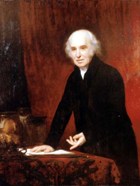
Hope became Professor of Medicine at the University from 1791–1795. John Burns, educated at the Universities of Glasgow and Edinburgh, was one of the first surgeons appointed to the infirmary, and in May 1797, obtained the managers' permission to deliver a series of clinical surgical lectures. He was surgeon/lecturer from 1797–1798, but due to his association with grave robbing in order to obtain subjects for anatomical dissection, was not reappointed until 1808–1809.44
Teaching assistants
With a shortage of subjects for human dissection, demands for fresh human material in the teaching of anatomy led to the ever-increasing search for human bodies. In the early 19th century, the medical students were responsible for most of the night-time missions, and in Glasgow, successful students were excused fees for their anatomy class.
In the early 19th century, the medical students were responsible for most of the night-time missions, and in Glasgow, successful students were excused fees for their anatomy class.
Students and teachers rationalised their actions as being in the nature of a post-mortem and aiding in the knowledge of disease.45 Helen Puttick writes that, today, students are still on the hunt for bodies, in her article in the Herald newspaper.
Got a body to spare? (reproduced with permission from the Herald (Glasgow); Newsquest (Herald & Times) Ltd © Newsquest Media Group46
For the present student, the dissecting room could be a bit of a culture shock. Professor Lorimer remembers his anatomy course in the 1950s.47
"The biggest weeding-out, of course, came halfway, or at the end of your third year, because we had five terms of anatomy, physiology and biochemistry. And that was, again, a sort of culture shock when we all walked into the dissecting room and there was a cadaver that six of you would spend your time dissecting over the next year. And while we worked on the arms, the year ahead of us did the head and neck. And it was interesting, so there was a smell of formalin and grease that really stayed with us for a long period of time."


